Garden in a hot climate presents a unique set of challenges and opportunities that require an understanding of the environment and careful planning to overcome them. Hot climates can be harsh on traditional gardens, with the intense sun and prolonged periods of dryness threatening the survival of many plants.
However, with the right techniques and knowledge, you can cultivate a rich, productive garden in a Hot Climate. This guide will walk you through the essential steps of creating and maintaining a garden in hot conditions, from selecting the right plants to implementing efficient watering practices. By adapting to your environment, you can turn these climatic challenges into a vibrant formation of growth and bounty in your own backyard.
Understanding Your Hot Climate Garden
Before you start planting, it’s crucial to grasp the specifics of gardening in a hot climate. Understanding the intensity and duration of sun exposure, average temperatures, and the dryness of your region can guide your gardening decisions. Gardens in hot climates benefit from designs that maximize shade during the hottest parts of the day and structures that protect plants from the intense midday sun. It’s also essential to consider the direction of prevailing winds and how they affect evaporation rates in your garden.

Planning with these factors in mind allows you to influence the natural conditions to your advantage, reducing stress on your plants and conserving resources. This strategic approach not only strengthens plant health and productivity but also minimises water usage and maintenance efforts, making your gardening more sustainable.
Choosing the Right Plants for Hot Climate
Selecting the right plants is of massive importance in hot climates. Opt for species that naturally withstand high temperatures and require less water. Many native plants are adapted to grow in local conditions and will perform better than non-natives. For vegetables, consider heat-tolerant varieties such as okra, peppers, and eggplant, which not only survive but also grow well in the heat. Herbs like basil, thyme, and oregano also cope well in hot environments. When choosing ornamental plants, look for those with heat-resistance and drought tolerance, such as lavender, salvia, and ornamental grasses, which add beauty and flexibility to your garden.

Introducing these plants into your garden promotes biodiversity, attracts pollinators, and reduces the need for chemical interventions. By carefully selecting appropriate plant varieties, you can create a more tough and self-sustaining garden that is better equipped to deal with the challenges of a hot climate.
Soil Preparation and Improvement for Hot Climate
Soil health is the foundation of any successful garden, especially in hot climates where the intense heat can quickly exhaust moisture and nutrients. Preparing your soil with the right amendments is essential for retaining water and supporting strong plant growth. Begin by testing your soil to understand its current condition, including pH level, nutrient content, and texture. This knowledge will guide your choice of amendments. For sandy soils that drain too quickly, adding organic matter such as compost or aged manure will help increase water retention and nutrient availability. In clay soils, which tend to hold water and become compacted, incorporating coarse sand and organic matter can improve drainage and aeration.

Regular applications of organic mulch, like straw, bark, or leaf mold, not only suppress weeds but also cool the soil surface and reduce evaporation. As these organic materials break down, they continue to enrich the soil, improving its structure and fertility over time. This creates a healthier root environment, essential for sustaining plant life in the scorching heat. Improving your soil with these methods will create a more adaptable garden that maintains higher moisture levels during dry spells and offers better conditions for root growth, ultimately leading to healthier, more vigorous plants.
Watering Strategies for Maximum Efficiency
Effective watering practices are critical in hot climates to ensure that plants get the hydration they need without wasting water. The goal is to water deeply and infrequently, encouraging plants to develop deep root systems that are better equipped to access water stored lower in the soil profile. Utilize drip irrigation systems or soaker hoses to deliver water directly to the base of the plants. This method reduces water loss from evaporation and minimises the spread of leaf diseases that can occur with overhead watering.

Timing is also crucial. Water your garden early in the morning to allow plants to absorb moisture before the heat of the day increases evaporation. If morning watering isn’t possible, late afternoon or early evening is the next best option, provided leaves have time to dry before nightfall. For gardeners in extremely hot climates, consider installing a simple timer on your irrigation system to maintain consistency and reduce the task of manual watering. Additionally, employ water-conserving techniques such as mulching and using water-retentive soil additives like hydrogel crystals, which can help maintain soil moisture. By adopting these strategies, you can create an efficient watering routine that supports a growing garden even under challenging conditions.
Sun Exposure and Shade Management
Managing sun exposure is crucial in a hot climate garden. While sunlight is essential for plant growth, too much sun can lead to heat stress, sunburn, and stunted growth. Strategically positioning plants and creating shade can lessen these risks. Use natural shade from trees or tall bushes to shield more sensitive plants from the harsh midday sun. Alternatively, installing shade cloths over your garden can provide a controlled barrier against intense sunlight. These clothes can be adjusted throughout the day or season to give plants the right amount of light while protecting them from overheating.

Consider the orientation of your garden beds in relation to the sun’s path. North-south oriented beds tend to receive more even sunlight, while east-west orientation might expose plants to prolonged afternoon sun which could be damaging in peak summer. For vegetable gardens, rotate crops that are less heat-tolerant into shaded areas during the hottest months. Additionally, using reflective mulches such as plastic films can help increase light exposure for low-light areas and keep soil temperatures cooler beneath the plant cover.
Mulching to Maintain Moisture and Cool Soil
Mulching is a simple yet effective technique to maintain moisture and cool the soil in hot climates. Organic mulches like wood chips, straw, or grass clippings not only cover the soil surface to reduce moisture evaporation but also insulate the soil against extreme temperature fluctuations. As these organic materials decompose, they enrich the soil with nutrients, promoting healthier plant growth. Apply a thick layer of mulch (about 2-4 inches) around your plants, ensuring that it does not touch the plant stems to avoid rot.

In addition to conserving water, mulch suppresses weed growth, which competes with your plants for water and nutrients. Replenish the mulch layer periodically throughout the growing season as it breaks down or becomes displaced. For areas with very high temperatures, consider using lighter-colored mulches, as they reflect more sunlight and retain less heat compared to darker materials. This strategy is particularly beneficial for protecting roots from the intense heat that can damage sensitive plant tissues and hamper growth.
Maintaining Plant Health During Heat Waves
During heat waves, even well-prepared gardens can suffer. It’s important to have strategies in place to protect your plants during these extreme weather events. Increase watering frequency and quantity to prevent soil from drying out completely—moist soil will keep the root zone cooler and reduce heat stress. For temporary relief, consider setting up a misting system that lightly sprays leafage during the hottest part of the day, reducing the temperature and providing relief to stressed plants.

Anticipate and recognize the signs of heat stress in plants, such as wilting, sunburnt leaves, or halted growth. Some plants may benefit from partial shade setups temporarily installed during heat waves. Fabric barriers, temporary nettings, or even umbrellas can be used to create shade. Moreover, applying a seaweed extract or similar foliar spray can provide essential nutrients and help plants recover from heat stress. Regular monitoring and adapting your care routine fast can save your garden from the detrimental effects of a heat wave, preserving your hard work and ensuring continuous productivity.
Creating Microclimates to Expand Plant Choices
Creating microclimates within your garden is a strategic way to grow a broader range of plants that might not typically grow well in your area’s general climate. A microclimate is a small area where the climate differs from the surrounding area. You can create these by manipulating elements such as shade, humidity, and soil moisture. For example, planting near a north-facing wall can provide a cooler, shadier environment for plants that need protection from the midday sun. Alternatively, a south-facing wall can absorb heat during the day and radiate it at night, creating a warmer microclimate suitable for plants that require more heat.

Water features like small ponds or fountains can increase humidity in their immediate territory, which can benefit plants that need moist air. Raised beds can also be used to adjust soil drainage and temperature more precisely than in-ground beds. By carefully positioning plants and using structures to alter environmental conditions, you can cultivate plants like ferns, which prefer cooler, shadier spots, alongside sun-loving plants like lavender, thereby maximizing the diversity and visual appeal of your garden.
Summary
Gardening in a hot climate presents unique challenges, but with the right knowledge and techniques, it can also be immensely rewarding. By understanding your local climate, selecting the right plants, and implementing strategies like efficient watering, soil improvement, and sun management, you can create a flourishing garden. Mulching, monitoring for heat stress, and creating microclimates are all practices that contribute to the sustainability and productivity of your garden. With these approaches, you can enjoy a prosperous, vibrant garden that not only survives but flourishes in hot conditions.
FAQ
Q1: What are the best vegetables to grow in a very hot climate?
A1: Vegetables that perform well in hot climates include tomatoes, peppers, okra, eggplant, and sweet potatoes. These plants are well-suited to withstand high temperatures and prolonged sunlight.
Q2: How can I tell if my plants are getting too much sun?
A2: Signs that plants are getting too much sun include wilting, scorched or sunburned leaves, and stunted growth. If you notice these symptoms, consider implementing shading techniques or adjusting the position of your plants.
Q3: Are there any specific mulches that are best for hot climates?
A3: In hot climates, lighter-colored mulches such as straw or pine needles are ideal as they reflect sunlight and don’t absorb as much heat as darker mulches, helping to keep the soil cooler.
Q4: How often should I water my garden in a hot climate during summer?
A4: Water needs can vary, but generally, a deep watering once or twice a week is sufficient if there is no rain. Monitor your plants and soil, and adjust based on conditions; during heat waves, you may need to water more frequently.
Q5: What are some common mistakes to avoid when gardening in a hot climate?
A5: Common mistakes include under-watering, planting non-native species that aren’t suited to high temperatures, and inadequate soil preparation. Avoid these by planning thoroughly, choosing suitable plants, and regularly caring for your garden.


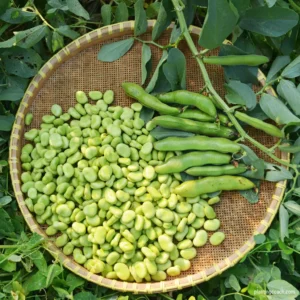
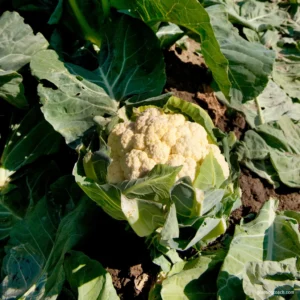
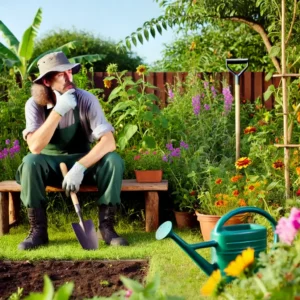

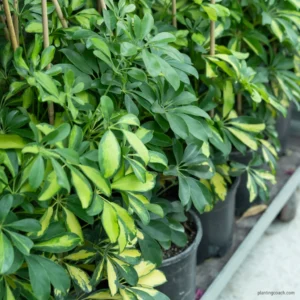
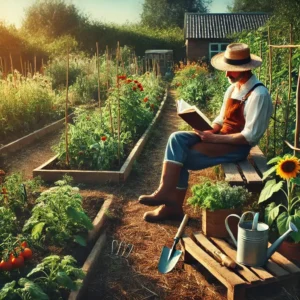
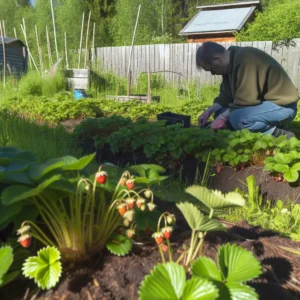
1 thought on “How Do You Make a Garden in a Hot Climate?”